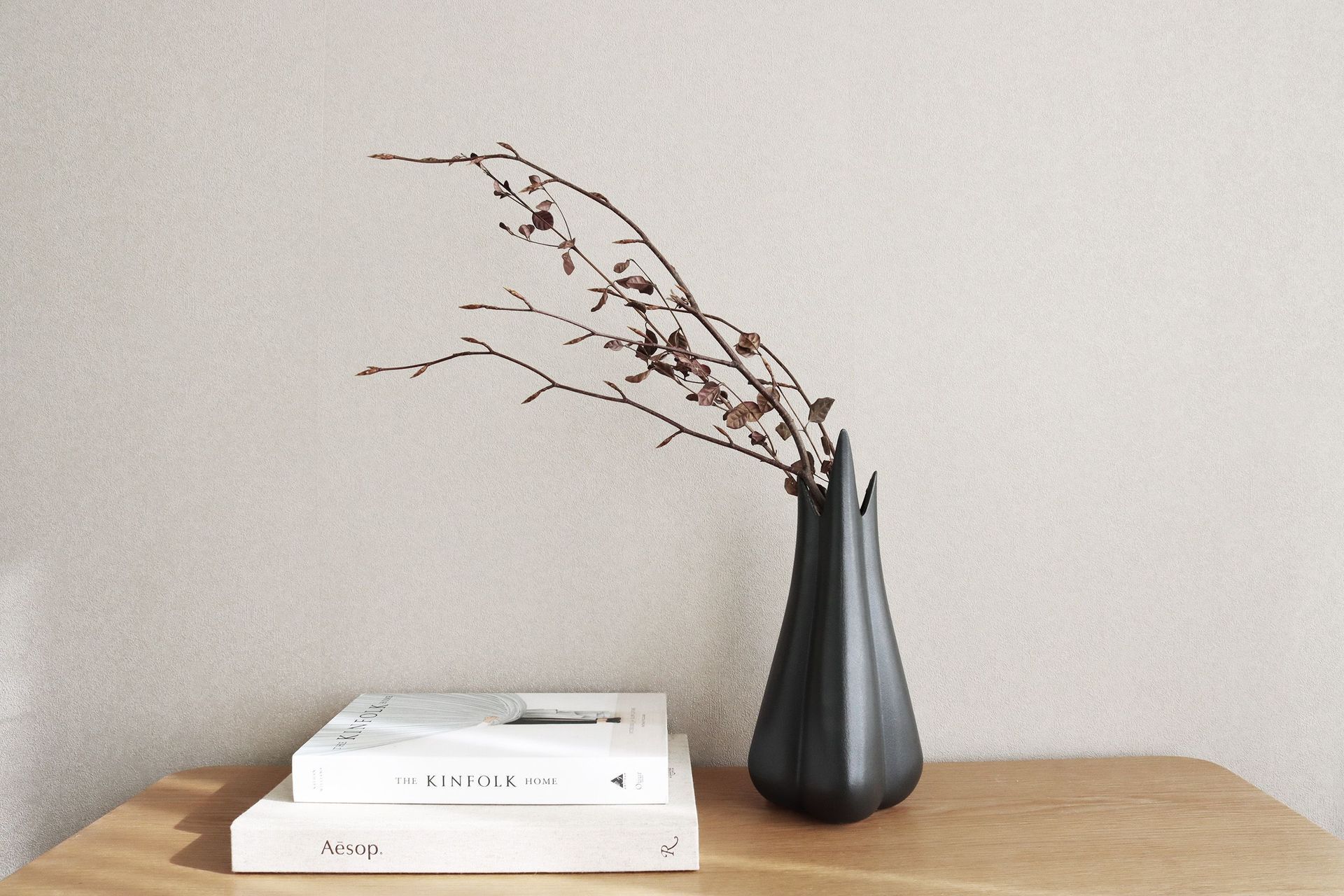5 simple ways to embrace ‘japandi’ interior design
Written by
08 January 2023
•
3 min read

Otsumigaki wall finishes
Directly translated from Japanese to English, ‘Otsumigaki’ means ‘second polishing’. A smooth and silky clay and lime premixed plaster, the lustre finish is achieved by being polished with a Japanese trowel and carnauba wax after being applied to the surface with two coats. Otsumigaki can be tinted, or left natural with its unique texture and variations on display.
“Much like its namesake, the beauty of Rockcote Otsumigaki lies in its ability to create textural depth with a smooth, flat surface, resulting in stunning, bespoke interiors that are durable, as well as beautiful to view and feel.”
Furniture with Japanese-inspired silhouettes
A combination of Scandinavian and Japanese design, furniture that speaks to the Japandi philosophy is minimalist and crafted from natural materials.
Take the Bensen Torii Dining Chair by Tim Webber Design, for example. Available in white oak, black stained ash or walnut with a leather or fabric upholstered seat, its minimal appearance with arched backrest is inspired by Japan’s traditional Shinto shrines.
“Torii is the Japanese name for the characteristic wood entrance arches to Shinto shrines in Japan and translates directly into English as ‘bird perch’. This motif perfectly describes the chair’s distinct proportions and traditional joinery, as well as the sense of harmony and calm inherent in design that is beautifully resolved.”
Lantern pendants
Lighting which evokes a serene atmosphere is key in Japandi design; the diffused illumination of lanterns is effective in achieving this while at the same time delivering a timeless, minimalist aesthetic.
The work of designers Barber & Osgerby, in collaboration with twentytwentyone – and manufactured by Japan-based Ozeki & Co – the Hotaru Double Bubble Pendant has been inspired by the heritage of Japanese lantern-making.
Japandi-inspired tile choices
For those embarking on a renovation or build, bathrooms can benefit from the calming characteristics of Japandi design. Kit-kat tiles are a popular choice for their minimal, textural appearance, however, large-format tiles can also fit well within the design philosophy.
A beautiful example is the Patina Plate tile from Live House Design Studio. Inspired by Japanese ceramics, the tiles celebrate organic form, natural beauty and the wabi-sabi ideology of “perfectly imperfect”.
Vases
Terracotta and organic forms are popular in Japandi interiors, often expressed through the use of vases – objects that answer to the philosophy’s emphasis on form and function.
An art piece in itself, the unique shape of the Lilium Vase from Van Brandenburg ensures the vase is striking when either in use, or simply sitting on a table or bookshelf.
Explore products on ArchiPro and start your Japandi-inspired design board.
Words by Cassie Birrer




